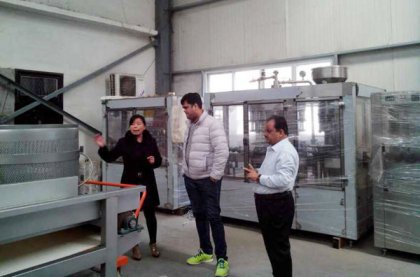Grape juice is rich in Vitamins, amino acid, protein, minerals and various organic acid. Drinking grape juice can help prevent cardiovascular disease, and promote bone development. In this article, I’ll tell you how to make grape juice at home without a fruit juicer or blender. Besides, I’ll also introduce the grape juice production process in factory, and what machineries it requires.
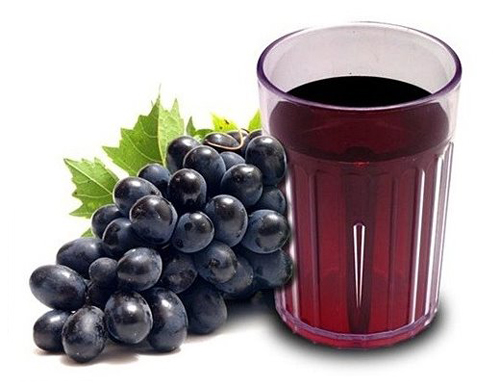
How to make grape juice at home?
Raw materials process
The best grapes for making juice should be full and ripe, with strong color and no disease or pests. Pick out the qualified grapes, clean them up, and remove the stem. Then, put them in an aluminium pot, and break them up with hands or a flat-base container.
Grape juice extraction
Heat up the pot with broken grapes on the fire. Keep the temperature around 70℃. After 5 min, pure the grape pulps into a 4-layer gauze. Squeeze them with your hands to extract juice as much as possible.
Grape juice blending and sterilization
Add 200-300g white sugar to every 1kg extracted grape juice, then stir to fully mix them up. After that, heat up the grape juice at the temperature of 80-85℃ for 20 min. At the same time, boil the bottle used to contain grape juice in to eliminate the bacteria. After sterilization, the grape juice must be filled into the bottle and sealed at once. Then wait the bottled grape juice cools down naturally.
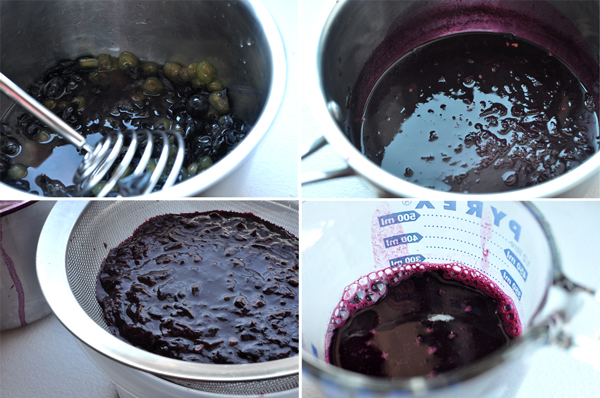
Grape juice production process in factory
The grape juice production process includes raw material selection, cleaning, stem removing, crushing, color distill, extraction, filtration, blending, clarification, filling and sealing, sterilization and cooling.
Raw material selection
Choose fresh and fully-ripped grapes with rich flavor and juice. Remove those unripe or overripe, injured or diseased grape. A fruit sorting machine can save your labor in this process.
Grape Washing
Dip the selected grapes with 0.03% potassium permanganate solution, then rinse them in floating water until there is no red left.
To clean the grapes efficiently, you can use surfing fruit washing machine. It a special equipment for cleaning fruit. The water tumbles under the function of water pump and make the fruits roll in the water tank. When they are brought out from the tank by the elevator, there are sprayers scour their surface. After these process, the impurities and dirt are removed completely.
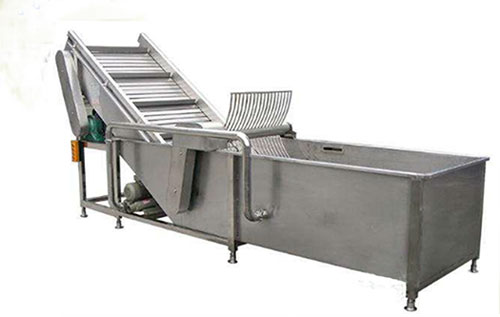
Crush, remove stems and seeds
Grape stems account for 3-8% of the fruit weight. Their main ingredient is lignin, with 1-2.5% tannin, 0.5-1.5% acid and a little bitter substance. We must remove them before crushing in case they contaminate the fruit juice.
The grape stemmer is a specialized equipment for this process. It can remove the grape stem, crush the grapes and transmit the grape pulp with a single-screw pump. The stepless speed screw feeder can realize quantitative feeding. The grape stemmer adapts to different grape varieties by adjusting the rotating speed. The crushing roller is made of non-toxic high electric rubber, doing no damage to the grapes. The crushed grape pulps are transmitted to the next step by a screw pump. The pore size of drum sieve can be customized according to the size of grape grains, so you should provide the maximum and minimum size of your grapes when ordering.
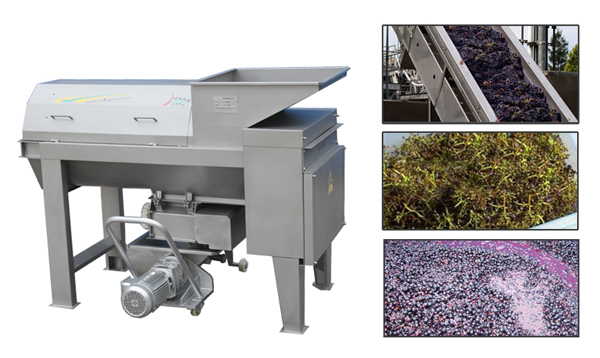
Heating for color distill
Heat up the crushed grapes to 60-70℃. Keep this process for 15 min so that the pigment in grapes infiltrate the fruit juice.
Grape juice extraction and filtration
Extract juice from the crushed grape pulps, then filtrate the juice and remove the slag with fabric cloth sack.
Grape juice blending
Fill the grape juice into the storage vat for blending. Add 20% sugar liquor to the juice and adjust the sugar degree to 16%. Then add 3kg of 2% metatartaric acid for every 100kg of grape juice, in case the tartars separate out from it.
Grape juice clarification
Clarify the cloudy grape juice with gelatins and tannins. Add 4-6g tannins in every 100kg grape juice. After 8 hours, add 6-10g gelatins to it. The suitable temperature for clarification is 8-12℃. When all floccules in the juice sink to the bottom, you can suck out the clear liquor with tubs. Next, you can heat up the clarified juice to 80-85℃.
Filling and sterilization
Fill the grape juice into sterilized glass bottle and seal it at once. Then put these bottled juice into 85℃ hot water for 15min. Next, add cold water gradually to lower the temperature to 35℃. Then you can dry the bottles and label it with your brand.
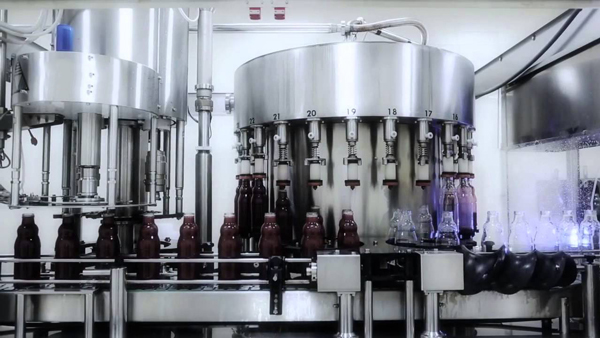
Notes on grape juice production process
Keep the grape juice away from iron, cooper or other metals in case the color changes. The extracted grape juice should be bottled under normal temperature. The air in the bottle must be expelled before the bottles are sealed.
After filling and sealing, the bottled juice need to be dipped in 85℃ hot water for 15-20 min for sterilization.

